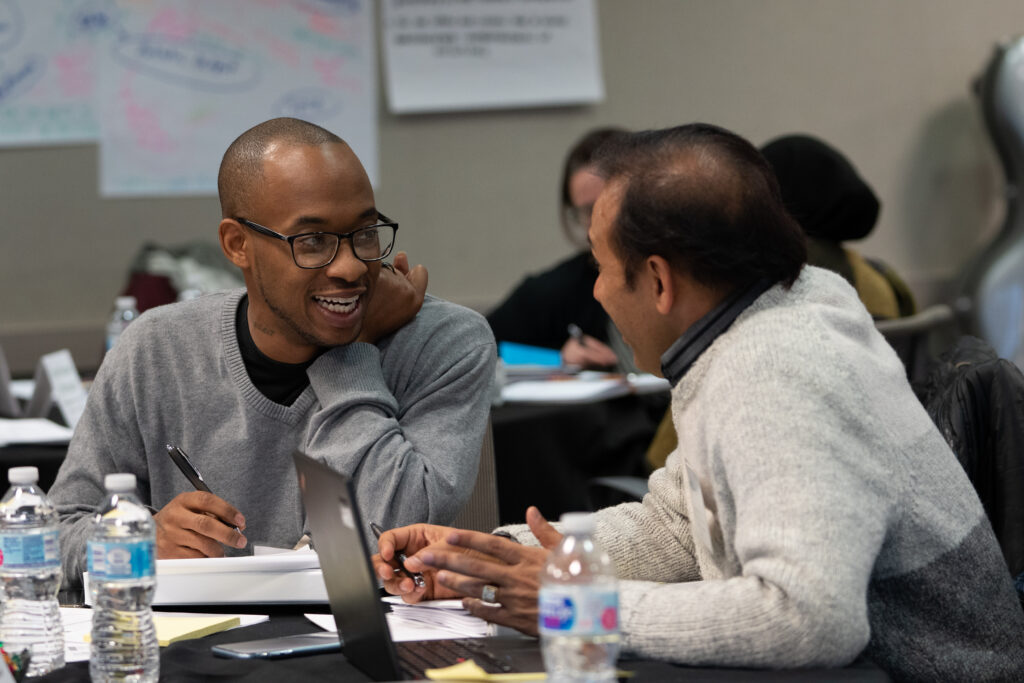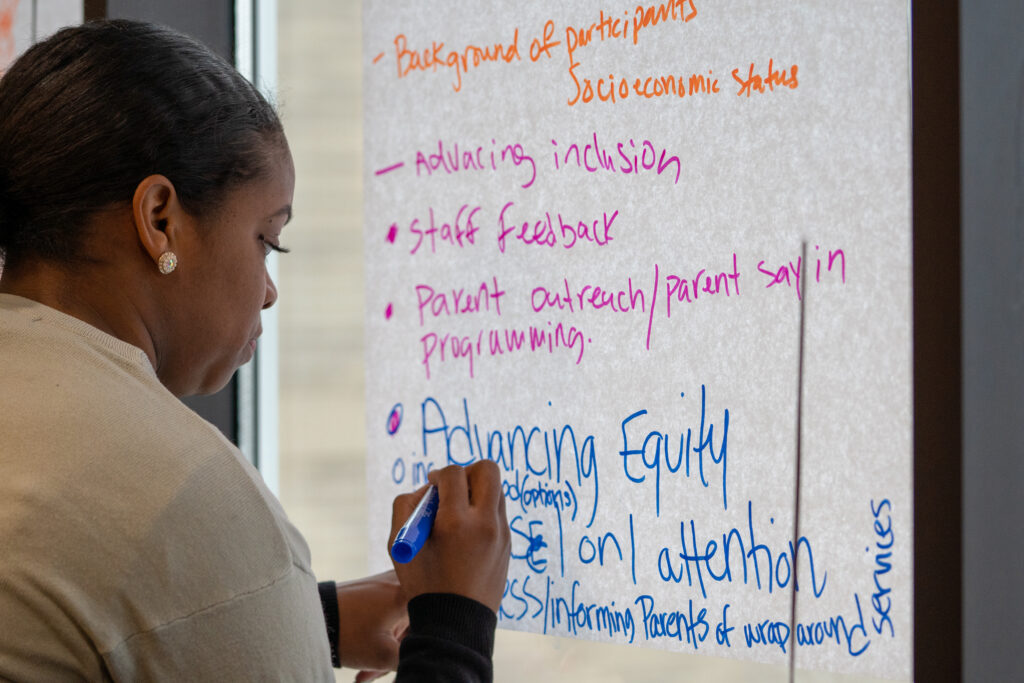Mission-driven nonprofits often have diversity, equity, inclusion, and accessibility goals and initiatives baked into their processes, or even literally in their mission itself. Make sure that these goals extend to all facets of your organization, including hiring practices for your staff and personnel.
Following inclusive hiring practices is one step toward achieving an inclusive workplace. By leveling the playing field, inclusive hiring practices ensure that all qualified candidates have fair access to employment opportunities. They also ensure compliance with governmental laws and regulation regarding equal employment opportunity. Perhaps most importantly, fostering an inclusive culture in the workplace leads to greater productivity, innovation, and staff retention.
In order to have a workspace culture informed by inclusive practices, be sure to consider all steps involved in hiring staff members. Think about the language you’re using in job postings, the way you’re listing requirements, how you approach benefits, make sure you’re transparent about salary ranges, and cast a wide net with your job posting. Then, use this tool to get ready to interview the people who will become part of your organization.
-
1
Be consistent.
Ask all candidates the same questions. This gives all candidates the same information and opportunity to speak to their relevant skills and experiences.
Asking follow-up questions helps. If a candidate does not respond to some of the issues you were hoping to hear about, ask if they have more to say. Get in the practice of asking, “Is there anything else you would like to add about X?”
-
2
Try to put the candidate at ease.
Candidates will give you the best picture of their abilities when they are relaxed. Create a welcoming atmosphere and express your enthusiasm to get to know the candidate. Do not try to see how the candidate responds under pressure by grilling or asking loaded questions. They are already performing under pressure!
-
3
Value substance over style.
Focus on what the applicant said, not how they said it. Listen for transferrable skills and relevant experiences. Do not evaluate candidates on traits like charisma, friendliness, or charm. Remember that nervousness is normal in a job interview, and is not a reason to question a candidate’s abilities.
-
4
View the interview as a two-way conversation.
You are helping the candidate decide whether this opportunity is right for them. Be prepared to answer questions about what it is like to work for your organization. Be honest and be yourself.
-
5
Hold off on making comparisons.
Basing your evaluation of candidates on how they compare to one another during the interview is not helpful or necessary. Evaluate all candidates against the job criteria first, using a rubric to score each candidate immediately after the interview.
-
6
Make sure your decision-making process is inclusive too.
Conduct a debrief session among all interviewers, after all initial interviews are complete, to explore how candidates compare to one another.
Equal employment opportunity
When you develop a solid interview plan and stick to it, you not only guarantee consistency, but you can also be sure that you are not inadvertently violating the candidate’s rights under United States Equal Employment Opportunity laws.
Without a plan, it is easy to ask questions or make comments that relate to characteristics that have nothing to do with a candidate’s ability to perform the duties of a position. Your plan should not include questions that could reveal any of the following:
- Citizenship: “Where are you from?”
- Family status: “Are you married?”, “Are you planning to have kids?/Do you have kids?”, “Will it be hard to be away from your children if you have to travel for work?”
- Age: “We must be about the same age. When did you graduate high school?”
- Ethnicity: “What an interesting last name. Where is that from?”
- Disability: “I see that you use a wheelchair. What kind of disability do you have?”
Pro tip: Make accommodations
If someone discloses that they have a disability, it is okay to ask if they need accommodations in the interview process or to carry out the functions of the job. For example, a question like “You mentioned you are deaf. Do you need an interpreter for the interview?” is completely acceptable and encouraged to ensure that the candidate has what they need in order to participate in the interview.

Understanding hidden bias
Everyone has biases. Hidden or implicit bias occurs when someone makes a judgment about a person based on certain characteristics without even realizing they are doing it.
It is not realistic to eliminate our biases completely in interviewing, but it is possible to be aware of biases and how they may influence our evaluations of candidates. Often, our “gut instincts” about a person are actually biases in disguise.
Following the key interviewing practices listed above will help to reduce the effects of hidden bias, but it is important to remain aware of the ways in which hidden bias affects your perceptions of candidates. Hidden bias can appear both during the interview and during post-interview assessments.
Types of Hidden Biases
Questions that seek to prove a gut feeling or initial assessment about a candidate can lead to inconsistency in questions and affect a candidate’s performance.
These mental shortcuts can occur when you reach a conclusion about a candidate that has to do with your own emotional state. For example, being tired from a long day of interviewing could affect your perception of a candidate in a late afternoon interview.
When you have something in common with a candidate, for example if they attended the same college or are from the same hometown as you, it can cause a bias.
When you allow one positive characteristic of a candidate to overshadow how you assess the candidate overall, this leads to bias.
The opposite of the Halo effect, when you allow one negative characteristic of a candidate to dominate how you assess the candidate overall, this leads to bias.
When other interviewers rate one candidate positively or negatively, there is significant social pressure to agree. This is one reason it is important not to discuss candidates before the debrief session.
In addition, some of the following characteristics about a candidate might impact how you view them, even if you are not conscious of it:
- Height and weight
- Introversion or extroversion
- Accent
- Beauty and physical attractiveness
- Where the candidate attended college
- Marital or parental status
- Disability
Inclusive decision-making practices
Once interviews and assessments are complete, the hiring manager is generally responsible for making decisions about which finalists are offered a position. Typically, everyone involved in the interview process has input into that decision. A debrief session to determine which candidates progress to the next phase of the hiring process is recommended. Interviewers should not discuss the candidates with any other interviewer until the debrief, even if you think it was obvious that the candidate bombed or aced the interview.
Pro tip: Use a rubric
Your organization can use a rubric, or scoring system, for all interviewers to use. This ensures that candidates are judged consistently on the important factors that drive the hiring decision. The rubric should align closely with each job posting, so that all interviewers are asked to assess the same desired qualifications and characteristics that the applicant was made aware of.

In the debrief, don’t rush to a decision. Start with a description of how you viewed each candidate, then share how you scored them. Don’t skip any candidates or breeze through candidates who were “clear standouts.” Allow all interviewers to share their evaluation of the candidate. At the end of the debrief, each interviewer should share their recommendations. The hiring manager is welcome to sleep on the information and make their decision after the debrief meeting.
Resources for Further Study
-
AIHR (Academy to Innovate HR)
12 Inclusive Hiring Practices You Should Implement
An overview of the benefits of inclusive hiring practices, including specific recommendations for HR policies and procedures.
-
National Council of Nonprofits
Why Diversity, Equity, and Inclusion Matter for Nonprofits
Practice pointers and suggestions for setting up a DEIA Action Plan for your nonprofit.
-
RespectAbility
Employers Embracing Employees with Disabilities
Information about the #RespectTheAbility campaign and resources to learn more about how hiring workers with disabilities could help you achieve greater success.
-
U.S. Department of Labor Office of Disability Employment Policy
Opening Doors to All Candidates: Tips for Ensuring Access for Applicants with Disabilities
Tips related to job analysis, communication, medical information, accommodations, and work site accessibility to ensure all qualified applicants can participate in the hiring process.
-
U.S. Equal Employment Opportunity Commission
EEOC Publications
Fact sheets and United States government documents that govern anti-discrimination laws regarding protected classes
